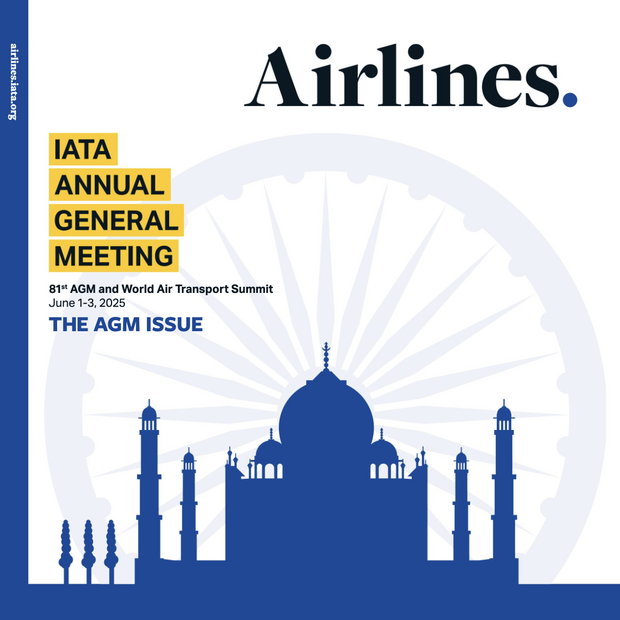
Translations:
الطلب المحلّي في قطاع السفر الدولي ينتعش في مارس رغم استمرار إجراءات الإغلاق على نطاق واسع
国际航协:三月份国内客运回升 但国际旅行仍未见转机 (pdf)
Crece la demanda de los viajes nacionales en marzo ([df)
Le trafic intérieur rebondit en mars, mais les voyages internationaux demeurent bloqués (pdf)
Viagens domésticas aumentaram em março, mas rotas internacionais continuam paralisadas (pdf)
Geneva - The International Air Transport Association (IATA) announced that passenger traffic fell in March 2021 compared to pre-COVID levels (March 2019) but rose compared to the immediate month prior (February 2021).
Because comparisons between 2021 and 2020 monthly results are distorted by the extraordinary impact of COVID-19, unless otherwise noted all comparisons are to March 2019, which followed a normal demand pattern.
- Total demand for air travel in March 2021 (measured in revenue passenger kilometers or RPKs) was down 67.2% compared to March 2019. That was an improvement over the 74.9% decline recorded in February 2021 versus February 2019. The better performance was driven by gains in domestic markets, particularly China. International traffic remained largely restricted.
- International passenger demand in March was 87.8% below March 2019, a very small improvement from the 89.0% decline recorded in February 2021 versus two years ago.
- Total domestic demand was down 32.3% versus pre-crisis levels (March 2019), greatly improved over February 2021, when domestic traffic was down 51.2% versus the 2019 period. All markets except Brazil and India showed improvement compared to February 2021, with China being the key contributor, as already noted.
“The positive momentum we saw in some key domestic markets in March is an indication of the strong recovery we are anticipating in international markets as travel restrictions are lifted. People want and need to fly. And we can be optimistic that they will do so when restrictions are removed,” said Willie Walsh, IATA’s Director General.
| March 2021 (% vs March 2019) | world share1 | rpk | ask | PLF (%-PT)2 | PLF (LEVEL)3 |
|---|---|---|---|---|---|
| Total Market | 100.0% | -67.2% | -56.8% | -19.7% | 62.3% |
| Africa | 1.9% | -71.8% | -61.6% | -19.2% | 53.0% |
| Asia Pacific | 38.6% | -60.4% | -51.6% | -14.8% | 66.9% |
| Europe | 23.6% | -81.7% | -74.1% | -25.4% | 59.3% |
| Latin America | 5.7% | -64.5% | -59.1% | -10.8% | 70.8% |
| Middle East | 7.4% | -80.3% | -65.6% | -31.4% | 42.2% |
| North America | 22.7% | -57.2% | -41.3% | -23.2% | 62.4% |
1) % of industry RPKs in 2020 2) Change in load factor vs. the same month in 2019 3) Load Factor Level
International Passenger Markets
Asia-Pacific airlines’ March international traffic was down 94.8% compared to March 2019, barely better than the 95.4% decline registered in February 2021 versus February 2019. The region continued to suffer from the steepest traffic declines for a ninth consecutive month. Capacity was down 87.0% and the load factor sank 48.6 percentage points to 31.9%, the lowest among regions.
European carriers recorded an 88.3% decline in traffic in March versus March 2019, just slightly ahead of the 89.1% decline in February compared to the same month in 2019. Capacity fell 80.0% and load factor fell by 35.0 percentage points to 49.4%.
Middle Eastern airlines’ demand fell 81.6% in March compared to March 2019, improved over an 83.1% demand drop in February, versus the same month in 2019. Capacity fell 67.2%, and load factor declined 32.3 percentage points to 41.3%.
North American carriers saw March traffic sink 80.9% compared to the 2019 period, a gain compared to the 83.4% decline in February compared to two years ago. Capacity sagged 62.6%, and load factor dropped 41.0 percentage points to 42.9%.
Latin American airlines experienced an 82.4% demand drop in March, compared to the same month in 2019, a slight improvement compared to the 83.7% decline in February compared to February 2019. March capacity was down 77.4% compared to March 2019 and load factor dropped 18.1 percentage points to 63.6%, highest among the regions for a sixth straight month.
African airlines’ traffic sank 73.7% in March versus March two years ago, marking a deterioration compared to a 72.3% decline recorded in February compared to February 2019. March capacity contracted 61.8% versus March 2019, and load factor fell 22.3 percentage points to 49.0%.
Domestic Passenger Markets
| March 2021 (%vs march 2019) | world share1 | rpk | ask | PLF (%-PT)2 | PLF (LEVEL)3 |
|---|---|---|---|---|---|
| Domestic | 54.3% | -32.3% | -20.5% | -12.5% | 71.6% |
| Dom. Australia | 0.7% | -45.8% | -34.7% | -13.5% | 65.8% |
| Dom. Brazil | 1.6% | -54.0% | -44.2% | -14.3% | 66.6% |
| Dom. China P.R. | 19.9% | -2.6% | -9.1% | -9.1% | 75.9% |
| Dom India | 2.1% | -32.4% | -14.0% | -18.5% | 68.2% |
| Dom. Japan | 1.5% | -58.3% | -45.7% | -17.6% | 58.1% |
| Dom. Russian Fed. | 3.4% | 8.5% | 0.9% | 6.1% | 86.5% |
| Dom. US | 16.6% | -43.9% | -28.5% | -18.6% | 68.0% |
1) % of industry RPKs in 2020 2) Change in load factor vs. the same month in 2019 3) Load Factor Level
Brazil’s domestic traffic was down 54.0% in March compared to March 2019, as the authorities tightened restrictions amid rising COVID-19 cases. This was drastically worse than the 34.9% decline in February over February 2019.
Japan’s domestic traffic declined 58.3% in March versus the same month in 2019, much improved from the 73.2% decline in February compared to two years ago.
The Bottom Line
“The emergence of new COVID-19 variants and rising cases in some countries are behind governments’ reluctance to lift travel restrictions and quarantine. However, we are beginning to see positive developments, such as the recent announcement by European Commission President von der Leyen that vaccinated travelers from the US will be allowed to enter the EU. At least 24 countries have already said they will welcome vaccinated travelers. We expect this to continue and gather momentum as vaccination numbers rise. However, governments should not rely only on vaccinations, as it risks discriminating against those individuals who are unable to get a vaccine for medical or other reasons, or who lack access to vaccines—a common situation in much of the world today. Affordable, timely and effective testing must be available as an alternative to vaccines in facilitating travel,” said Walsh.
“Furthermore, for as long as these health measures are required, governments need to accept digital COVID-19 test and vaccination certificates and to follow global standards for issuing their own vaccination certificates and test results. We are already seeing intolerable waits at some airports, as airlines, passengers and border control authorities are having to rely on paper processes at a time when airports are no longer designed to accommodate them. The IATA Travel Pass addresses this challenge by enabling travelers to control and share their digital vaccination certificate or test results with airlines and border authorities, easing facilitation and reducing the risk of fraudulent documents,” said Walsh.
- View the full March Air Passenger Market Analysis, (including 2021 vs. 2020 comparisons)
- Update on air cargo and air travel markets in March (pdf) from Brian Pearce, IATA's Chief Economist
- View Willie Walsh remarks at the 4 May media briefing
For more information, please contact:
Corporate Communications
Tel: +41 22 770 2967
Email: corpcomms@iata.org
Notes for Editors:
- IATA (International Air Transport Association) represents some 290 airlines comprising 82% of global air traffic.
- You can follow us at https://twitter.com/iata for announcements, policy positions, and other useful industry information.
- Statistics compiled by IATA Economics using direct airline reporting complemented by estimates, including the use of FlightRadar24 data provided under license.
- All figures are provisional and represent total reporting at time of publication plus estimates for missing data. Historic figures are subject to revision.
- Domestic RPKs accounted for about 54.3% of the total market.
- Explanation of measurement terms:
- RPK: Revenue Passenger Kilometers measures actual passenger traffic
- ASK: Available Seat Kilometers measures available passenger capacity
- PLF: Passenger Load Factor is % of ASKs used. - IATA statistics cover international and domestic scheduled air traffic for IATA member and non-member airlines.
- In 2020, total passenger traffic market shares by region of carriers in terms of RPK were: Asia-Pacific 38.6%, Europe 23.6%, North America 22.7%, Middle East 7.4%, Latin America 5.7%, and Africa 1.9%.

